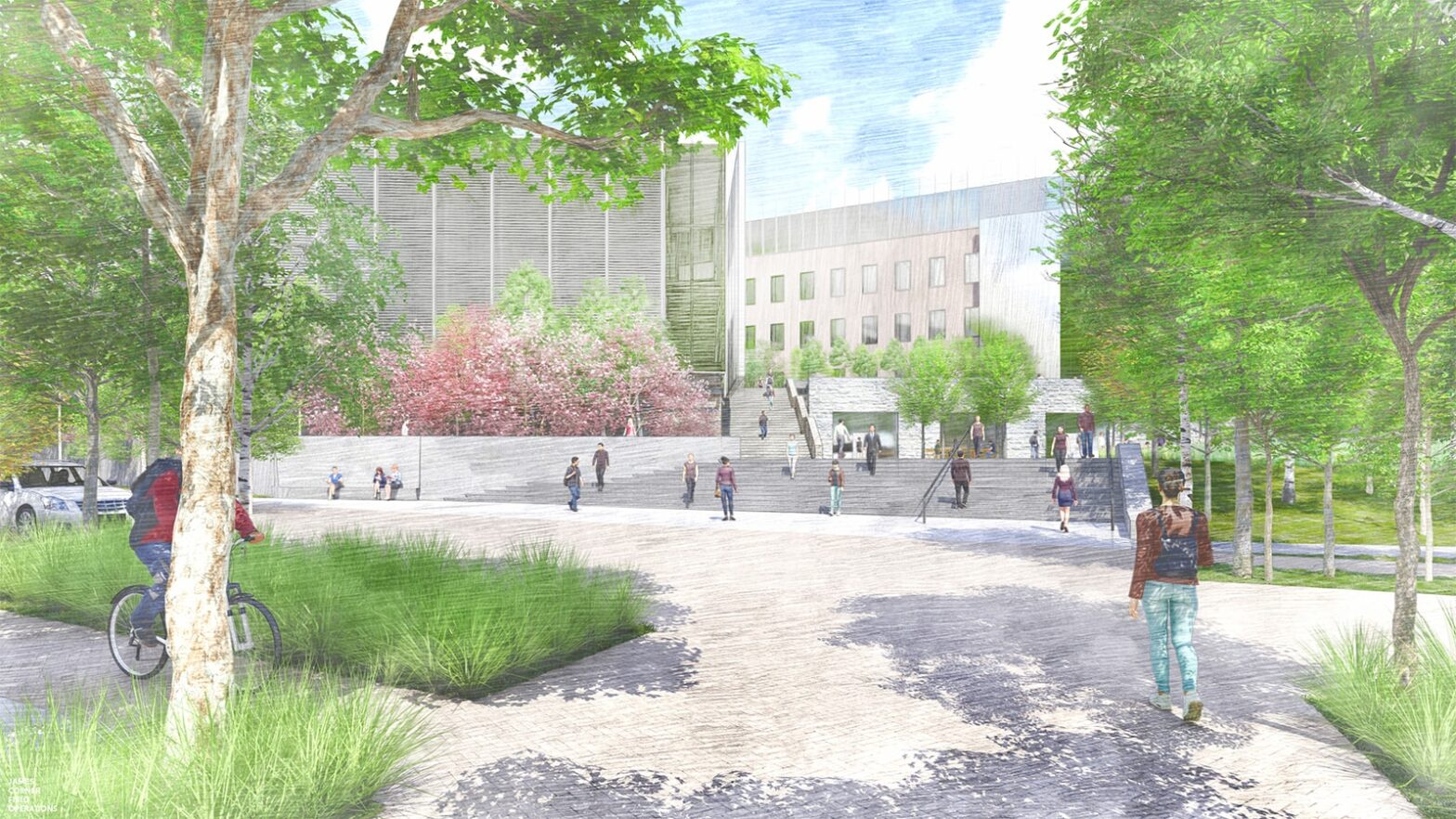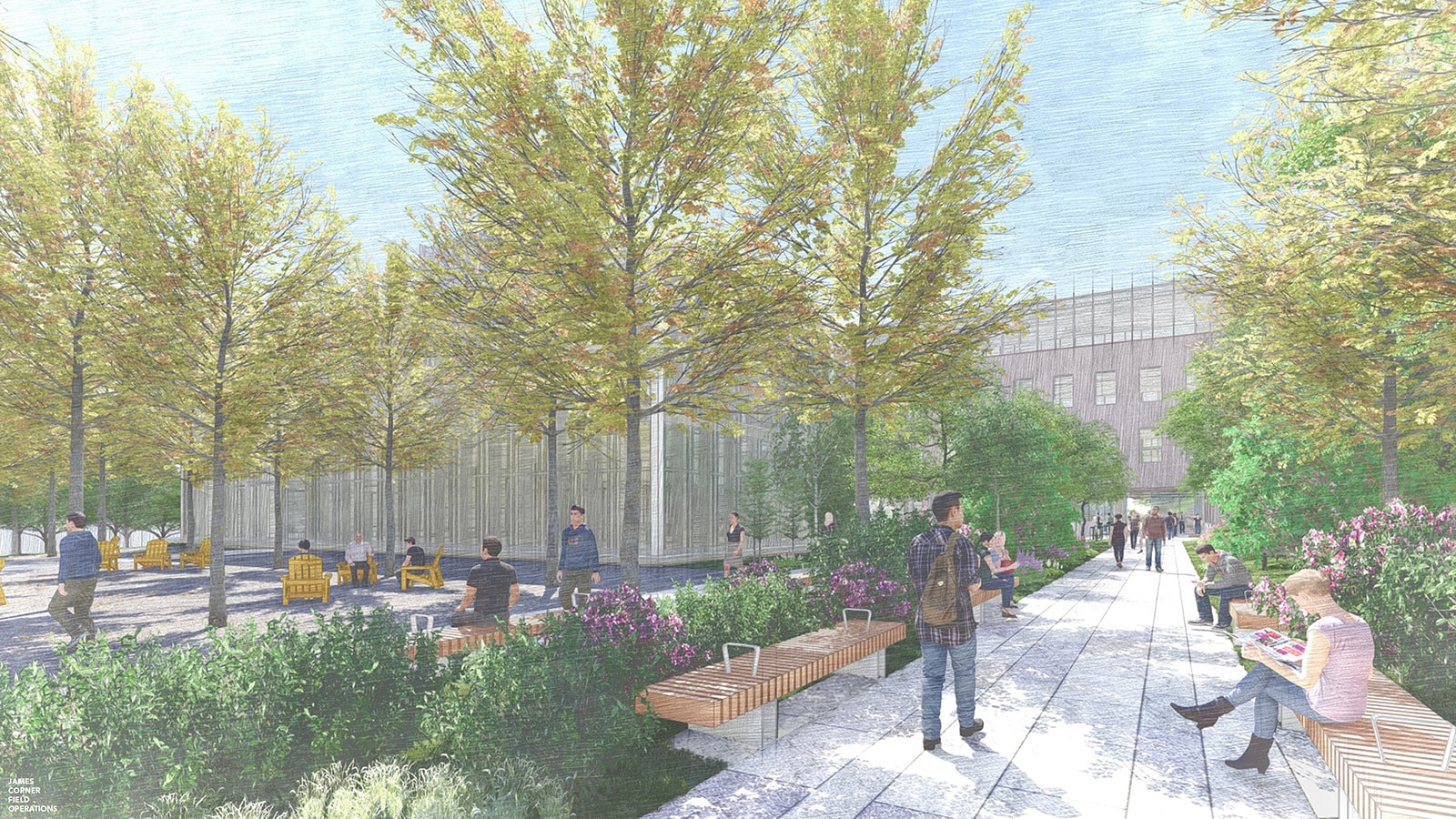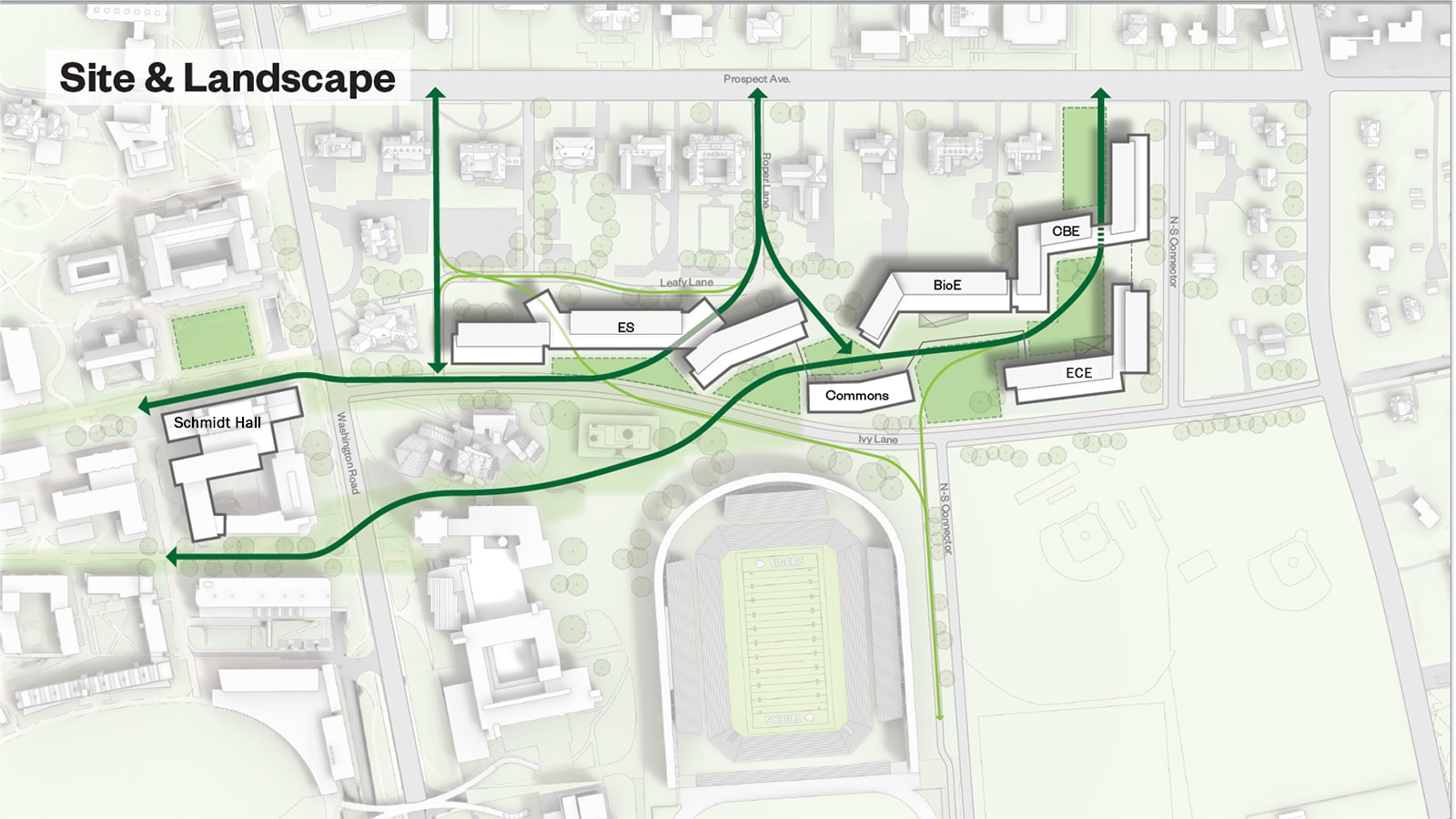
University to create neighborhood for engineering and environmental science
By
on
This article is from the E100 issue of Equad News magazine.
“It is really designed around connectivity,” said University Architect Ronald McCoy.
The four initial buildings scheduled to open late in 2024 — environmental science, bioengineering, chemical and biological engineering, and an engineering commons — will be terraced into the hillside between Prospect Avenue and Ivy Lane currently occupied by faculty and staff housing and parking lots behind the eating clubs. Longer-term plans include a building for the Department of Electrical and Computer Engineering and then spaces for other engineering departments as well as programs central to the school’s mission.

Viewed from Prospect Avenue, this illustration shows part of the building to be home to the Department of Chemical and Biological Engineering, including the “Theorist Pavillion” in the foreground.
Illustration by Princeton University
The new buildings, all connected underground in one continuous sequence, will maintain distinct identities for disciplines while allowing for strong connections among them and carefully integrating into the University’s traditional architecture and landscaping.
“It’s about making community,” McCoy said. “We have created many social spaces, gathering spaces, whiteboard spaces, lobby spaces that bring people together.”

The map shows the location of the new computer science facility in Eric and Wendy Schmidt Hall, as well as new facilities for environmental sciences (ES), bioengineering (BioE), and the departments of Chemical and Biological Engineering (CBE) and Electrical and Computer Engineering (ECE).
Illustration by Princeton University
The neighborhood will include sunken courtyards and pathways and provide strong connections to nature and outdoor spaces. At the western end of the arc, across Washington Road, historic Guyot Hall will be rebuilt and substantially expanded to create a new home for computer science. The project, funded by a gift from Eric Schmidt ’76 and Wendy Schmidt, will consolidate computer science, which is currently spread over multiple buildings, as well as the Center for Information Technology Policy and the Center for Statistics and Machine Learning. The facility will be named Eric and Wendy Schmidt Hall and the Guyot name (from Arthur Guyot, Princeton’s first professor of geology and geography) will be recognized in new space associated with environmental science.

The new neighborhood also includes a new home for environmental sciences and common green spaces shared with engineering buildings.
Illustration by Princeton University
Together, the buildings set the stage as the School of Engineering and Applied Science moves into its second century of research and teaching, McCoy said.
“When we spoke to the faculty they were really clear: ‘We need better space and we need more of it.’ These are state-of-the-art, flexible, and highly functional teaching and research spaces, and they are sized to accommodate the growth of the school.”





